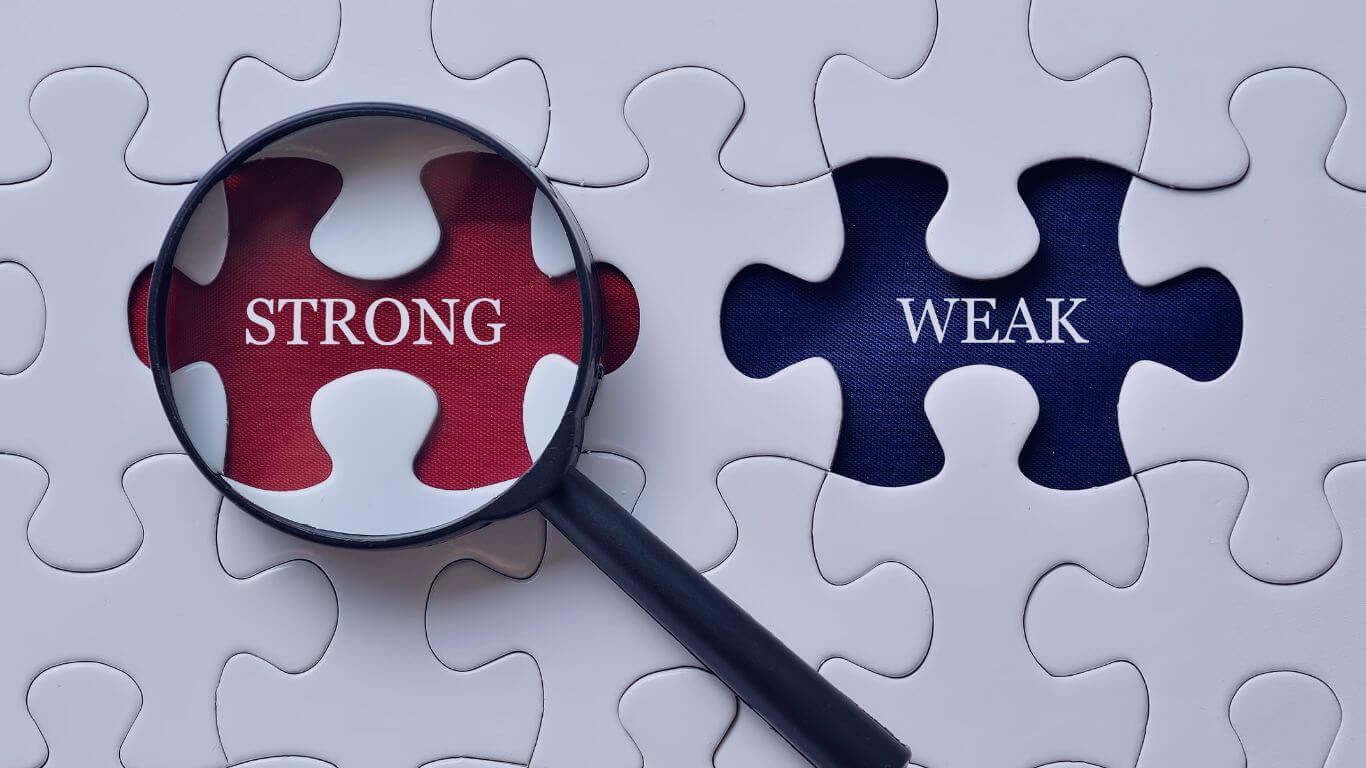Strengths and Weaknesses Assessment - Your Opportunity for Growth
Summoning Strengths from Perceived Weaknesses - Your Strengths & Weaknesses Assessment
A lot of my work with clients, whether in their professional life or personal life, seems to revolve around strengths and opportunities. Or, to put it more plainly, strengths and weaknesses. Why do I equate weaknesses with opportunities? Well, keep reading!
Unlike traditional strengths assessments or psychometric tests, my approach goes deeper than surface-level test results.
Although we tend to be quick to identify our weaknesses and reluctant to celebrate our strengths, throughout our lives, we are always aware of both. Which means we’re really good at seeing how bad we are. And, because we’re taught from an early age that this is being humble, we think it’s a good thing and accept it.
But this couldn’t be further from the truth! Unfortunately, when it comes to seeing how good we are, when it comes to seeing and acknowledging our personal strengths and natural talents, we can actually be quite blind. Many people focus on weaknesses assessment without recognizing their unique qualities.
When I work with clients, I ask them to write down all their strengths on one side of a piece of paper and all their weaknesses on the other side. This simple strengths and weaknesses assessment process is often more revealing than traditional personality tests or strengths assessment tools. It’s a great way to uncover hidden layers of their own unique strengths that typical free tests might miss. Then I go through each attribute, beginning with their strengths. Then I ask them a series of questions about each one.
- Who told you you had this strength?
- What did they tell you, and what did you believe?
- How old were you?
- Was there an event attached to this?
- How has this affected your life?
- Do you use it to enrich your life?
- Do you use it to enrich the lives of others?
- Do you overuse it?
- Who else in your family has a similar strength?
Sometimes I have to half drag the information out of them. Why? Because they’ve been taught that talking about and celebrating their own strengths and key strengths is arrogant, and that doing so is somehow damaging. This affects their work life and ability to contribute effectively as team members.
Only after we’ve covered their strengths do I move on to their perceived limiting traits. And let me tell you, here people sing like canaries! Most are pretty sure that solving their limiting characteristics will bring about much needed transformation, and that they will finally be “fixed.” And, they’re right, but not for the reasons they think. Because while some of their limiting characteristics may have their origins in their family system, the “fix” they’re looking for begins with them.
Then, I ask them the following questions about their areas of improvement. This assessment method provides valuable insights in different contexts:
- Who told you you had this weakness?
- What did they tell you, and what did you believe?
- How old were you?
- Was there an event attached to this?
- How has this affected your life?
- How much pain has this caused you?
- Do you use it to shut yourself out of opportunities?
- Do you use it as an escape clause?
- Do you overuse it?
- Has it robbed you of your resilience?
- What else has it robbed you of?
- Who else in your family has a similar weakness?
- Does that weakness really belong to you?
When I ask them, “Who made your strengths and weaknesses a reality?” Eventually, they recognize that they are the ones who have agreed to their limitations. Predictably, they’re a little more reluctant to realize that they are also the ones who have co-created their strengths.
Emotional Imprinting
When we hear things from people in authority and accept those things, they become our new reality. These external factors, coupled with intense emotion (shame, guilt, humiliation, anger, etc.) create what we’re shown or told as an emotional imprint that epigenetically influences our lives and those who come after us.
The magic happens when I ask a client which one of their so-called weaknesses is itching to become a strength, if only it is given a chance. This strengths-based approach to personal development often reveals unrealized strengths and areas of strength that they never recognized.
For example, I have a client who was told very young that she was terrible at math. She didn’t like how it felt, especially when the cool kids laughed at her in class. She desperately wanted to belong, and so, quite without prompting, she began to tell herself how good she was at math. She started going to her math teacher and asking for one-on-one assistance. The teacher was only too willing to give her extra attention! But the key to her improvement was herself. She was so determined to succeed and belong that she even started doing extra math homework on her own.
In other words, she bet on herself, and that is priceless.
Within six months, her perception of herself had shifted, and within a year, her math grades were top-notch. The cool kids stopped taunting her and were asking her for help instead.
When I asked her what she had learned during this shift, she was very clear. “Nobody tells me who I am,” she said, “and I don’t ever quit once I’ve decided to do something.” And guess what? Today, that client is a very successful accountant! Who knows where she would have ended up if she had not decided to turn a weakness into a strength!
We Have the Key
The thing is, this is possible for all of us. We all have the keys to transformation at our disposal. We just have to believe in ourselves and create an action plan for positive change. This powerful tool of self-awareness can lead to better outcomes in both our daily lives and professional goals.
Often, I have clients go back to the triggering event behind a weakness and begin to reframe it. This honest self-reflection provides valuable insights in different ways. For example, sticking with “math issues,” I have another client, “Jack,” who was always a straight A student in school. But in the 9th grade, his father was going through a severe mental health crisis, and he and his mother had to flee the house.
In a heightened state of survival, there was no time to think about math or do math homework. And the next math test in school, he got a “D.” Trying to be a “good kid,” he made no excuses for himself and didn’t ask for help. Rather than blaming his circumstances and his dad’s issues as the source of the problem, he blamed himself. After that triggering event, he told himself he was no good at math.
Now, thoughts are the mechanism of the brain, and emotions are the mechanism of the body. When they are aligned, this alliance creates strong perceptions that we perceive as the truth. Notice the important ingredients: heightened emotion, triggering event, reactive thoughts, feelings, and actions creating a faulty thought pattern with a strong enough emotional force to be interpreted as the truth.
Also, notice that this pattern was never consciously deactivated or debriefed, and so the faulty perception continued on through the years, affecting both his professional development and personal growth.
Once I stepped him through the questions above, Jack saw the assumptions he’d made and saw how he’d kneecapped himself. And he shifted. Because once a client sees what’s happened and changes their thoughts, feelings, and actions around a perceived weakness and begins to see a new potential, the whole game changes. This first step toward reaching their full potential is often the most transformative.
Bottom line, a weakness is simply a strength that hasn’t been activated yet, or a potential strength that was deactivated by some event. And they can be activated and reactivated by you. You have the power to change and become your best self.
Is this a lot of work? Yes, it is. But so is maintaining your so-called weaknesses. Which kind of work would you rather do? The best way forward is to start with a better understanding of yourself and take that crucial step toward transformation. The power is in knowing that you can!
A Systemic Expert & Executive Coach, Judy Wilkins-Smith assists high-performance individuals, Fortune 500 executives, and legacy families to end limiting cycles and reframe apparent challenges into lasting breakthroughs and peak performance by guiding them through and beyond hidden Emotional DNA patterns. Her books Decoding Your Emotional Blueprint and The Hidden Power in Your DNA are two exciting guides on your journey to purpose.
Access your free chapter of Decoding Your Emotional Blueprint












